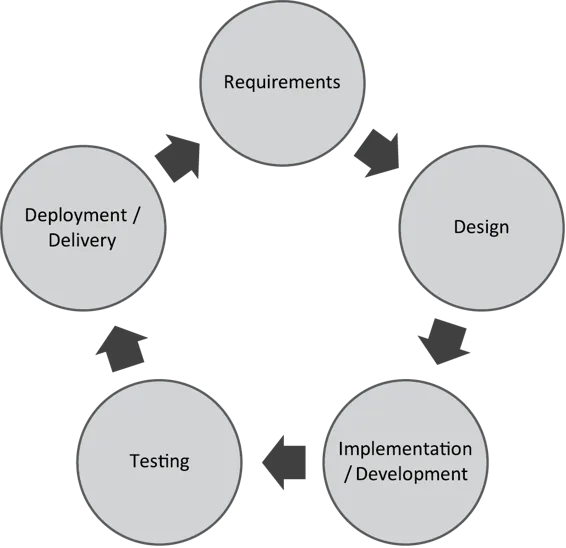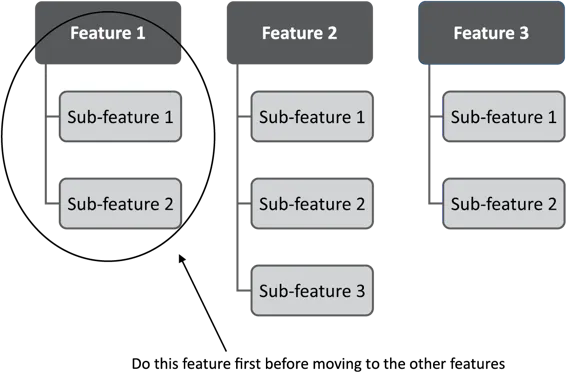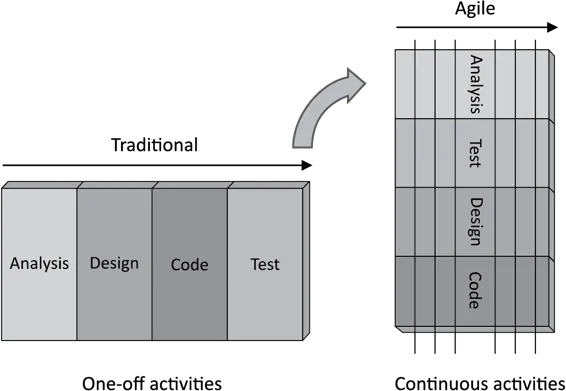
Agile Essentials You Always Wanted To Know
Vibrant Publishers
- English
- ePUB (handyfreundlich)
- Über iOS und Android verfügbar
Agile Essentials You Always Wanted To Know
Vibrant Publishers
Über dieses Buch
- Agile Manifesto Principles and Values
- Scrum Pillars, Roles, Artifacts
- Agile Planning and Execution
- Agile Project Management
Agile Essentials You Always Wanted To Know is a complete yet compact and easily understandable guide for anyone wanting to learn the fundamentals of Agile.
The Agile methodology can be greatly beneficial for many projects and organizations. But what exactly is Agile and is it always beneficial? Agile Essentials You Always Wanted To Know provides a primary understanding of the Agile development methodology, when it is appropriate to use it, and the commonly used Agile practices.
By understanding Agile through this book, one will be able to adapt to the changing project requirements, complete projects and work faster, and optimize the workflow along with efficiently managing the various stages of a project.
The reader will gain an understanding of the following from this book:
- An overall understanding of Agile, its methodologies and common practices
- An introduction to Scrum, a key Agile methodology
- The various aspects of Agile planning as well as execution
- The applicability of Agile in development and operations
- The concepts and practices in Agile tracking and reporting
- An overview of Agile leadership and team practices
About the Series
This Self Learning Management Series intends to give a jump start to working professionals, whose job roles demand to have the knowledge imparted in a B-school but haven't got a chance to visit one. This series is designed to address every aspect of business from HR to Finance to Marketing to Operations, be it any industry. Each book includes basic fundamentals, important concepts, standard and well-known principles as well as practical ways of application of the subject matter. The distinctiveness of the series lies in that all the relevant information is bundled in a compact form that is very easy to interpret.
Häufig gestellte Fragen
Information
Agile Overview
In this chapter we shall look at what is Agile and why it is needed. We shall also learn the pre-requisites to use Agile, its main characteristics, and the myths around it. Here we shall take a brief look at the various popular Agile methodologies. Key learnings:
|
1.1 What is Agile?
- Work has high uncertainty in scope – Scope means the work that needs to be done on the project or operations. In several cases, scope is quite clear in the minds of the customer and other stakeholders. However, in most cases, the customer only knows some part of the problem. Hence, the solution providers are asked to take up a few known requirements to start off and learn as they go. In such cases, scope is not clear in the beginning and it evolves as the work progresses. This is especially common on projects, as scope on projects is progressively elaborated – clarified as the work progresses.
- Work involves “knowledge workers” – The term “knowledge workers” stands for highly skilled resources. Work that requires such resources is best positioned to apply Agile concepts, as one of the key characteristics of Agile is to give a lot of decision-making authority to the team. Hence, the team needs to have the required skills to take proper decisions.
1.2 Need for Agile


1.3 Agile Characteristics



1.4 Agile Myths
- It is a silver bullet that ensures success of a project – It is seen that some people think that if their project is failing, they should introduce Agile and all the issues will get resolved and success will be guaranteed. This is not true. Agile does help in improving project success, but only when the pre-requisites (two pre-requisites described in an earlier section) are satisfied. However, it does not guarantee success.
- It does not require documentation – Agile is about being customer centric by doing only value-added things and cutting waste. This means that critical documentation would still be made, but those documents that are less useful and seen as a waste, might not be made. So, making a statement that no documentation is needed is incorrect.
- There is no need to plan – Planning in Agile is done in increments (parts) instead of all upfront planning. Planning might not be as detailed as in the traditional approach, but it does exist and done only to the extent that the team deems adequate.
- It does not need a disciplined approach – There are several values, principles, and practices defined in various Agile methodologies that we follow. Some of them are stringent, but most of them are quite flexible and are left to the team to decide how and which ones to apply. This does not mean that it is not a disciplined approach; it is simply more flexible in allowing selection and implementation of the approach.
- It involves a lot of rework – This is exactly the opposite, as we get customer feedback for each iteration and build further. Due to this early feedback, the rework is in fact lesser than in the traditional approach.
1.5 Agile Manifesto
1.5.1 Agile Mindset
